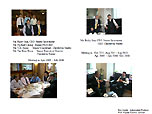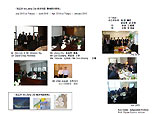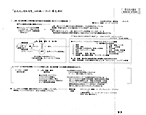Singapore government
��Mr. MAH Bow Tan
Minister for National Development
�� Dr. Yaacob Ibrahim
Minister for the Environment and
Water Resources (as of 2010)


Singapore government
�� Mr. Lee Yi Shyan , Minister of State


��Mr. Lim Chin Beng
Former Ambassador to Japan
��CapitaLand ILEC (Singapore GLC)
Mr. Wong Heang Fine, CEO


��Suntec Investment Pte Ltd
Mr. Ricky Sim, CEO
��Mr. Ng Kiat Chong, former PSA CEO
��Mr. V.K. Rajan
Former Ambassador of Singapore to Egypt


��Cheung Kong Holdings Ltd.
Mr. Edmond Ip, Deputy Managing Director
�� Hutchison Port Holdings (HPH)
Mr. Raymond LAW CEO,
Australasia and North Asia


��PSA International Ltd.
Mr. Vincent LIM CEO, NE Asia
��Global Maritime & Port Services Pte Ltd
Mr. Goon Kok Loon, Executive Chairman
��Capt. Chua, Wilson Vice Chairman
��Mr. Sheri, L.K. CEO


��Keppel Land International Ltd
(Singapore GLC)
Mr. Tan Swee Yiow, CEO
Mr. John Tan, Manager
��SCCCI
(Singapore Chinese Chamber of
Commerce & Industry)
Mr. Lim Sah Soon, Secretary-General
Mr. Mak Yuen Chong, Director


��Mr. Lim Chin Beng, Chairman
Changi Airports International Pte. Ltd.
��Mr. Alan Chan, CEO
Singapore Press Holdings Ltd.
Chairman of URA


��Marina Bay Sands Pte Ltd
Mr. George Tanasijevich
President & CEO
��Mr. Goh Phai Cheng
Senior Counsel, Goh Phai Cheng LLC
Advocates & Solicitors
Former Judicial Commissioner of the
Supreme Court of Singapore


�� Sino-Singapore Tianjin Eco-city
Investment & Development Co. Ltd
(SSTEC)
Mr. HO Tong Yen, CEO
Mr. Ng Ooi Hooi, Deputy CEO others


�� TEDA
(Tianjin Economic -Technological
Development Area)
![���]�s �o�ϓ���E���s�s�J��](img/offer_img11.jpg)

�� Wu Jiang Economic Special Zone
/Ecological City Development


�� Dandong Economic Special
Zone/Ecological City Development


10th WCEC
(World Chinese Entrepreneurs
Convention)
�� Mr. Gim Lee, Chairman
Omartis Pte Ltd
�� Mr. Richard Ng
Chairman of Dyson Group


�� Mr. Hui Wing Mau, Chairman
Shimao Group
�� Dr. Lucio C. Tan, Chairman
Lucio Tan Group of Companies
Chairman and CEO, Philippine Airline



�� Mr. Teofisto �gTG�h Guingona �V
Congressman, House of Rep.
Republic of Philippines


��Member of Singapore Delegation



��Mr. Chen Feng - Chairman,
Hainan Airlines Company, Ltd. �C�q�W�c

 �� Mr. George Yeo �� Mr. George Yeo
Minister for Foreign Affairs,
Republic of Singapore
 |
|
|
 |
 |

Records of negotiations with foreign governments and investment institutions and documents of their offers toward Revitalization
�|Offers from abroad including the US White House in response to our negotiations�|

Great Hanshin-Awaji Earthquake 1995 �� Great East Japan Earthquake 2011
Efforts to rehabilitate the affected areas and to revitalize the Japanese economy
�gOpen Rehabilitation:
�@�@�@Real Rehabilitation cannot be realized without Opening Japan�h
Evidence from the experience after the Great Hanshin-Awaji Earthquake and the �gStructure of the strategy�h and �gActions�h needed for the rehabilitation from the Great East Japan Earthquake.�h

���{�̐����헪�Â���Ƃ��čs�����o�σn�u��i2008�`2010�N�j�́A���Ɛ헪�Ƃ��ē��{���������т邽�߂ɕK�v�ƂȂ� �w�J���ꂽ���{�̍\���Â���x �ł�����B
��_�W�H��k�Ђɑ����A�����{��k�Ђ���̕����́A���� �w�J���ꂽ���{�̍\���Â���x �ɔ����ATPP�Q����_�@�Ƃ��āA�C�O���{�E�����@�ւƂ̋������ɂ��A���������A�Y�ƕ�����B��������ƍl����B
����䂦�A��Вn�A���{�̕����Ɍ����K�v�Ƃ��ꂽ�����̓��e�Ɛi�s�ɂ��āA�L���I�[�v���ɓ`������ׂ��ł���ƍl���A�����ɊT�v���܂Ƃ߂܂����B
Japan�fs growth strategy discussed in the meetings on Economic Hub Development (2008-2010) means to �gcreate a structure to open Japan.�h
By creating the structure to open Japan, we believe that rehabilitation efforts for the Great East Japan Earthquake following the Hanshin Awaji Earthquake will help mobilize funds for rehabilitation and industrial revitalization at the opportunity of Japan�fs participation in TPP with the cooperation by foreign governments and investment institutions.
Below, the progress of our activities needed for the rehabilitation of the disaster area and Japan is outlined.
|
 |
| 1�� |
���}�h������i2011�N�`�j �̉���Ԓ��ɍs�����A
�K�v�ƂȂ镜�������l���Ɍ������A�����ɂ��C�O�ł̌����̕�
1���@Reports on negotiations with overseas organizations by Suzuki sent to MPs to ensure required rehabilitation funds while the Non-Partisan Rehabilitation meetings were held (2011 and on)
2011�N10��21���A���`��著�M
21 October 2011, sent from Hong Kong
2011�N10��8���A��11�E�؏���c �V���K�|�[����著�M
���t��c�� �i ���}�h����� �y�� �o�σn�u���i� �̎Q���� ���j �F
| �Ό��M�Y�@�����[������ |
| ��c���F�c�� |
��J�R�l�c�� |
�M���L��c�� |
�����Y�c�� |
�≮�B�c�� |
| �}�@�_�j�c�� |
�����@�m�c�� |
�������v�c�� |
�����ꔎ�c�� |
�É�ꐬ�c�� |
| �n�ӊ���c�� |
�����m�� |
|
|
|
| �}��K�j�c�� |
���t����Y�c�� |
�O�����i�c�� |
���엊�v�c�� |
|
MPs addressed:
| Ishihara, Nobuo, former deputy Chief Cabinet Secretary |
| Noda, Yoshihiko, MP, DPJ |
Sengoku, Yoshito, MP, DPJ |
Tarutoko, Shinji, MP, DPJ |
| Aisawa, Ichiro, MP, LDP |
Iwaya, Takeshi, MP, LDP |
Ryu, Hirobumi, MP, DPJ |
| Matsubara, Jin, MP, DPJ |
Nagashima, Akihisa, MP, DPJ |
Haraguchi, Kazuhiro, MP, DPJ |
| Koga, Issei, MP, DPJ |
Watanabe, Yoshimi, MP, Your Party |
Matsuzawa, Shigefumi, Kanagawa Governor |
| Edano, Yukio, MP, DPJ |
Gemba, Koichiro, MP, DPJ |
Maehara, Seiji, MP, DPJ |
| Matsuno, Yorihisa, MP, DPJ |
|
|
|
|
 |
| |
 |
| 3�� |
�o�σn�u��i2008�`2010�N�j �̉���Ԓ��ɍs�����A
��{�@�Â���ɕK�v�ƂȂ�A�C�O�ł̌�����́A�������e�c���֑��t�̕�
3���@Reports on negotiations with overseas organizations by Suzuki sent to MPs while Economic Hub Development meetings were held (2008-2010).
They contained information required for drafting the Basic Hub Development Act.
2010�N8��5���A�V���K�|�[����著�M
5 August 2010, sent from Singapore
2010�N7��22���A���`��著�M
22 July 2010,�@sent from Hong Kong
2010�N6��11���A��C��著�M
11 June 2010,�@sent from Shanghai
2010�N1��29���A��C��著�M
29 January 2010, sent from Shanghai
2010�N1��15���A�k����著�M
15 January 2010, sent from Beijing
2009�N11��30���A��10�E�؏���c �}�j����著�M
30 November 2009, sent from Manila, 10th WCEC
2009�N11��21���A��10�E�؏���c �}�j����著�M
21 November 2009, sent from Manila, 10th WCEC
2009�N7��22���A���`��著�M
22 July 2009,�@sent from Hong Kong ���t��c���F�@�i����j
MPs addressed:�@ (same as above) |
|
 |
| 4�� |
���E�ő�̊��s�s�u�V�ÃG�R�V�e�B�v�ւ̓����̃v���f���[�X�Q��ƁA
�����ҁE�V���K�|�[�����{�Ƃ̊Ԃł́A���{�̔�Вn�����ւ̋����J������
4���@Our participation in producing the world largest ecological city �gTianjin Eco-City�h and a joint development study between the Singapore government as its general director.
�� ������2009�N���A���E�ő�̊��s�s�J�� �u�V�ÃG�R�V�e�B ���v�̊j���Ƃ̂��߂̃v���f���[�X�Ɩ���i�߂Ă���B
�����ɂ����{�ł̎o�����Ƃ����A�o�����̃r�W�l�X���f���J���̎��ƍ\���ɁA�����{�̃L�[�p�[�\�����^�������߁B
�V�ÃG�R�V�e�B��i�߂铝���ҁECEO�A�����Ƃ̊ԂŁA�V�Â���ѓ��{�i�����j�ł����݂ɉ������ẴX�^�f�B ��i�߂Ă���B
Since 2009, we have been engaged in producing the core projects in the world largest ecological city �gTianjin Eco-City.�h
We obtained approvals from key persons of the Singapore and Japanese governments to promote our proposal to develop a sister project in Japan which has a structure to develop an interactive business model. We are conducting a feasibility study with the CEO and other executives of the Tianjin Eco-City organizer by mutually visiting Tokyo and Tianjin.
�� �����{��k�Ђւ̒��}�h������ɂ��u4����v���́A���Ɂu�G�R�V�e�B�{�����ԐV�Y�Ɠ���v �̓����E�J���Ɍ����A�V�ÃG�R�V�e�B������V���K�|�[�����{���ƊJ����MAH Bow Tan��b�Ƃ̊ԂŁA���͌����ւ̌����s�����B
2011�N10�����݁AMAH��b��M���Ƃ��铊���@�ւ̗����~�b�V�������_�@�ɂ��ẮA�����ւ̍��ƃv���W�F�N�g�Â���̌�����i�߂Ă���B
�� �V�ÃG�R�V�e�B�́A�V���K�|�[�����{�ƒ������{�i���ƕ�j���Ԃ�FTA�����сA�V���K�|�[�����{�����E����̗D�ǂȓ������W�߁A�J�����s���Ă���B
We negotiated with Minister Mah Bow Tan of National Development of Singapore who directed the Tianjin Eco-City for his cooperation with the �gEco-City + Automobile-related New Industries Special Zone�h among the �gFour Special Zones�h proposed by the non-partisan Rehabilitation Group to rehabilitate the affected area of the Great East Japan Earthquake.
As of October 2011, we are discussing the plan as a national project taking an opportunity of receiving a Singapore Mission to Japan comprising investment institutions headed by Minister Mah.
���@The Tianjin Eco-City is developed by the Singapore government mobilizing investors from the world upon signing an FTA agreement with the Chinese government (Prime Minister Wen Jiabao).
|
|
 |
| 5�� |
�C�O���{�A�������{����̈˗��ɂ��A�o�ϓ���E���s�s�J���ւ̃v���f���[�X
5���@Producing Economic Special Zones and Ecological City Developments upon request from foreign governments and local governments
|
|
 |
|
�gOpen Rehabilitation:
�@�@�@Real Rehabilitation cannot be realized without Opening Japan�h
Evidence from the experience after the Great Hanshin-Awaji Earthquake and the �gStructure of the strategy�h and �gActions�h needed for the rehabilitation from the Great East Japan Earthquake.�h
��_�W�H��k�Ђɓ������Ƃ���������E�s���́A�u����WTO�A���`�Ԋ҂�w�i�Ƃ���A�W�A�ł̃_�C�i�~�Y���ĕ҂̂��ƂɁA��̓I�ȍ\���ƍs���i���L�j�ɂ���ĕ���������������A������}����́v�ł������B�@����ڂ̊J���@��B
The rehabilitation policy and action that we deployed after the Great Hanshin-Awaji Earthquake were intended to rehabilitate Kobe by inviting funds for practical structure and activities (below) in the context of changing dynamism in Asia driven by the 1st WTO conference and the return of Hong Kong to China. (First Opportunity to Open Japan�fs Doors)
�����{��k�Ђ̕����ɂ����ẮA�uTPP���͂��߂Ƃ��鍑�ۘg�g�݂̉�������́A�A�W�A�ł̃_�C�i�~�Y���ĕ҂��A��Вn �y�ѓ��{�֎�����Ă������Ƃ̐헪�I�ȍ\�������ݕK�v�ƂȂ�A��̓I�ȃA�N�V�������N�����Ă���v�Ƃ���ł���B�@�@����ڂ̊J���@��B
For the rehabilitation of the Great East Japan Earthquake,�@�gA strategic structure is required to introduce changing dynamism of Asia accelerated by TPP and other international frameworks for the affected area and Japan, and we are taking concrete action for it.�h (Second Opportunity to Open Japan�fs Doors)
��_�W�H��k�Ђł́A�^�̕����ւ̕����^���E���́A����̓����{��k�ЂƂ̊ԂŁA�K�͂̍���������A���ɋߎ����Ă���B
��_�W�H��k�Ў��ɂƂ��������ւ̐헪�ƍs�����A����̐k�Ђɐ�������邱�Ƃ������M���A�������s���Ă���Ƃ���ł���B �u���v�헪�������Ă̊J���́A�^�̕������l�炦����v�@�ƍl����B
Although the scale is much larger, social conditions and environment for rehabilitation after the East Japan Earthquake closely resembles those after the Hanshin-Awaji Earthquake.
Believing that the strategy and action we deployed after the Hanshin-Awaji Earthquake will be applied to the rehabilitation of the affected area of the East Japan Earthquake, we are taking actions.
We believe that �gOpening Japan with the strategy to seek national interest will lead rehabilitation efforts in real terms.�h

��_�W�H��k�Ў��̕����ɂ����āA�����͐k�Г�1��17�������ɍ��R�E�_�ˎs���Ɓi���R�Ȃ��瓯���ɑō������\�肳��Ă����j�A�����ĊL���E���Ɍ��m���ɉ�A
�k�ЈȑO�����s���\��ł������o�ϓ��搧�x�̓����ɂ��āA���s�����B �L���m���͂��̒�����A����V�����\���s�����B
On the very day of the Hanshin-Awaji Earthquake on January 17, 1995, we had an appointment to meet Mayor Sasayama of Kobe followed by a meeting with Governor Kaibara of Hyogo prefecture to propose the introduction of Economic Special Zones in Hyogo prefecture. Immediately after the earthquake, we proposed this initiative, and Governor Kaibara accepted this, and announced it to the press a few days later.
��������̌o�ϓ��搧�x�̓����̓��e�́A
�u1996�N�̑���WTO�t����c�ł́A�����E�`�p�E�ʐM�̎��R���ւ̑傫�ȗ���v�ƁA
�u��1997�N�̍��`�̒����Ԋ҂ɔ��� ���`���Y�̕��U�v�@�ɒ��ڂ��āA
Our proposal to introduce Economic Special Zones intended to catch the trend of liberalizing investments, port operations and communication services at the 1st WTO ministerial conference in Singapore in 1996, and the dispersal of assets of Hong Kong at the time of its return to China in 1997.
 1. 1.
�w �����̑h�B�E�����E��C�ɂ�����o�ϓ���G���A�Ɍ������A
�V���K�|�[�����{�̃I�y���[�V�����ɂ�鐢�E���̓����W��@�ƁA
��Вn�ł���_�ˍ`�E��w�n�Ƃ̊ԂŁA�헪�I�ȍ\��������A
�D�ǂȓ�������{�Ăэ����� �x�@�Ƃ������̂ł������B
�����̃V���K�|�[�����{�̕�����b�A�y�щp���n���`�̍������{���́A����Ɏ^�����A�����ւ̃I�t�@�[���ނ𑗕t���Ă����B
�����āA
2.
���{�̖f�Ղ��x����_�ˍ`�ցA���`�̒����Ԋ҂ɔ������Y���U�Ƃ��āA400��TEU�̃g�����W�b�g�������A���`���ڐ݂����悤�Ƃ������̂������B
�����́A���E1�A2�ʂ�Hutchison Whampoa���APSA���Ƃ̊ԂŌ����s���A�ڐ݂ւ̃I�t�@�[�Ă����B �܂��A�č������{�ւ̍`�p���ق����������邽�߂̏����Ƃ��āA�č��ʏ���\ Charlene Barshefsky������ɓ��ӂ��Ă����B�i������Independent-Producer�̗���Ō��B�j
It included:
1. Establish a strategic structure between Economic Special Zones in Suzhou, Wuxi and Shanghai into which investments from the world were introduced promoted by the Singapore government and Kobe Port and its hinterland in order to invite investors to Japan.
A few ministers of Singapore and British-supported companies in Hong Kong supported the proposal and gave us letters of their offers.
And,
2. Transfer 4 million TEUs of transit resources from Hong Kong to Kobe Port, a major trading port in Japan, as a means to transfer their assets outside Hong Kong..
We negotiated with Hutchison Whampoa and PSA, the world first and second port operators, and received their offer to transfer their resources.US Trade Representative Charlene Barshefsky also agreed to their transfer as a condition to lift US sanctions on Japanese ships entering US ports. (Suzuki negotiated with her on the capacity of an independent producer.)
1.�ɂ��ẮA
�����������͕ӕ����ψ����́A�����ւ́u�_�ˁ|��C�E���]����o�ό𗬃v���W�F�N�g�v�𗧂��グ�����A�c�O�Ȃ���A�����ł�������Вn�ł̌o�ϓ��搧�x�����𐭕{�͔F�߂��A���ʓI�ɎY�ƕ����͂����炳��Ȃ������B
2.�ɂ��ẮA
���������������C�O����̑�K�͂ȓ����ɂ��āA�_�ˎs�́A�C�O�I�y���[�^�[��r�����������R���A��������ۂ����B
�i���{�̍`�p�ז��A��w�n�ɂ�����A�K���E���s�ւ̉��v�����ہB�j
�������A���� ��_�W�H��k�Ў����A �����ƈ�A�̊����́A
�w �����J���Ȃ���A�^�̕����𐬂����Ȃ����� �x ���A�����Ă���B
For 1, Chairman Shimokobe of the Rehabilitation Committee initiated the �gKobe-Shanghai and Yangtze Basin Economic Exchange Project�h upon our proposal. Unfortunately, the Japanese government did not approve the introduction of Economic Special Zones in the affected area, and as a result, industrial rehabilitation was not realized.
For 2, the Kobe city office did not accept the large investments from abroad that we had prepared for the reason of excluding overseas port operators. (The city rejected the reform of bad restrictions and practices in cargo handling at ports and its hinterlands.)
The above facts after the Hanshin-Awaji Earthquake show that our proposals and activities will not �ghelp the rehabilitation of the disaster area without opening the country.�h

�����{��k�Ђɂ����ẮA�K�v�ƂȂ镜���͓��{�S�̂ɂ�������Ă���A�O�k�Ў��ȏ�̐헪�ƍs�����K�v�ł���B
���{�� �u�����J�����Ƃւ̍\�������������Ɛ헪�v �ƂƂ��ɁATPP���̍��ۓI�Șg�g�݂ɓ��{���Q�悵�A���v�ƂȂ���Տ������m�ۂ���ƂƂ��ɁA
�����ɕK�v�ƂȂ�l�X�ȕ��������i�Γ������A�G�l���M�[�A�N�ƉƓ��l�ގ����A�m������ ���j���l������K�v������ƍl����B
Rehabilitation from the Great East Japan Earthquake is closely related to the economic revitalization of Japan as a whole. Therefore, we need stronger strategies and activities than the case of the Great Hanshin-Awaji Earthquake.
We consider it necessary for Japan to have a national strategy with a structure to open the country, to participate in TPP and other international frameworks and to ensure trading conditions to be in the national interest. At the same time, funds for rehabilitation (domestic investment, energy, human resources including entrepreneurs, knowledge resources, etc.) should be obtained.
2008�N���́u�o�σn�u��v�ƁA2011�N����́u���}�h������v�@���̒́A�u���{�� �g�����헪����{�@�ł���h ���Ƃɂ��A���Ɛ헪�v�@�ł���A�܂��A �u��̓I�ȍ\�� �� �s�����e�����A���{�̕����v��v�@�ł�����B
�����́A
1.�@�����ɂ��A�A�W�A�̐�������������A�C�O���{�A���{�n��ƁA�����@�� ���Ɠ����Ԃ�
�@�@ ��ڂȂ��������A
2.�@�������Q��c���e�ʂւ́A�������e�̕����i2011�N�`�j�@�i2008�`2010�N�j�A
3.�@�c���e�ʂɂ�����e�̐���ւ̎��{�ڍs�����ɂ���āA���i����Ă���B
Proposals by the �gEconomic Hub Development�h meetings from 2008, and the non-partisan �gRehabilitation�h meetings in 2011 mean the�@�gthe national strategy by stipulating the growth strategy of Japan as a Basic Act�h as well as the �grevitalization plan for Japan with a concrete structure and actions.�h
These proposals are promoted by our continuous negotiations with foreign governments, government-linked corporations and investment institutions which lead the growth of Asia, reporting of the negotiations to MPs participating in the meetings (2011) (2008-2010), and putting the contents into actual governmental policies by participating MPs.
|
|
 |
| |
 |
| 7�� |
��_�W�H��k�Ў���
��Вn�A���{�̕����ւ́A�����ƊC�O���{�A�����@�ւƂ̌����́A�����E�^���I�t�@�[
7���@Offers for investments and mental support obtained through my negotiations with foreign governments and investment institutions for the rehabilitation of the affected area of the Great Hanshin-Awaji Earthquake and whole Japan.
1.�@�č����{�哝�̎��@�o�[�V�F�t�X�L�[�ʏ���\
2.�@�V���K�|�[�����{�@MAH Bow Tan�^�A�ʐM��b
3.�@�n�`�\���E�����|�A�Ёi���E�ő�̉p���n���`�����A�`�p�I�y���[�^�[�j
4.�@�o�r�`�i�V���K�|�[�����{�@�`�p�I�y���[�^�[�j
|
|
 |
|
 |
| 9�� |
��10�E�؏���c�i2009�N11���A���F�}�j���j�@�ɁA�V���K�|�[����\�Ƃ��ďo�ȁB
���{�̊J���ւ̍��Ɛ헪�Â���Ƃ��āA�܂��u�o�σn�u��v�ɔ�����ƂƂ��āA
���{�̕����̂��߂ɕK�v�ƂȂ�D�ǂȓ��������ւ̌����A���ɂčs�����B
9���@Suzuki took part in the 10th WCEC held in Manila in November 2009 as a member of the Singapore delegation. At the convention, Suzuki explained his strategies to open Japan on behalf of the parliamentary Economic Hub Development group. Suzuki also negotiated with delegates to make investments in Japan to help its economic revival.
|
|
|
|